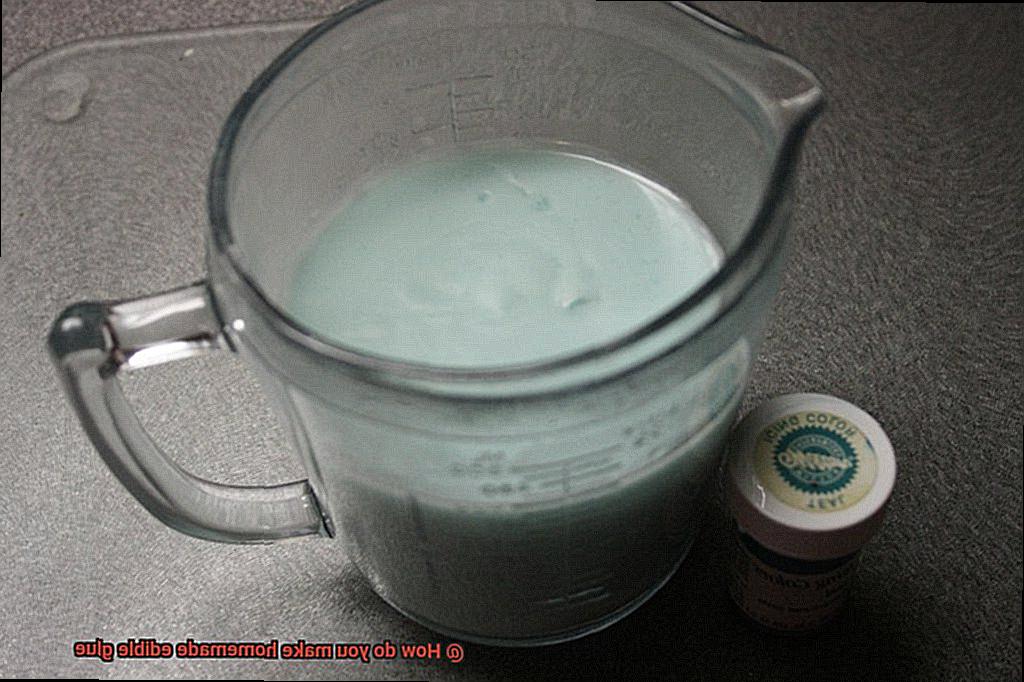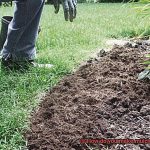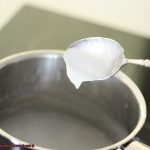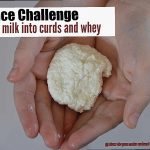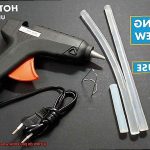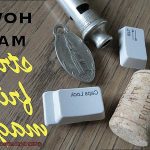Welcome to the world of homemade creativity, where everyday ingredients become magical crafting supplies and culinary companions.
Ever been in a sticky situation, desperately needing edible glue for your baking or confectionery projects, only to find it missing from the supermarket shelves? No worries, my friend.
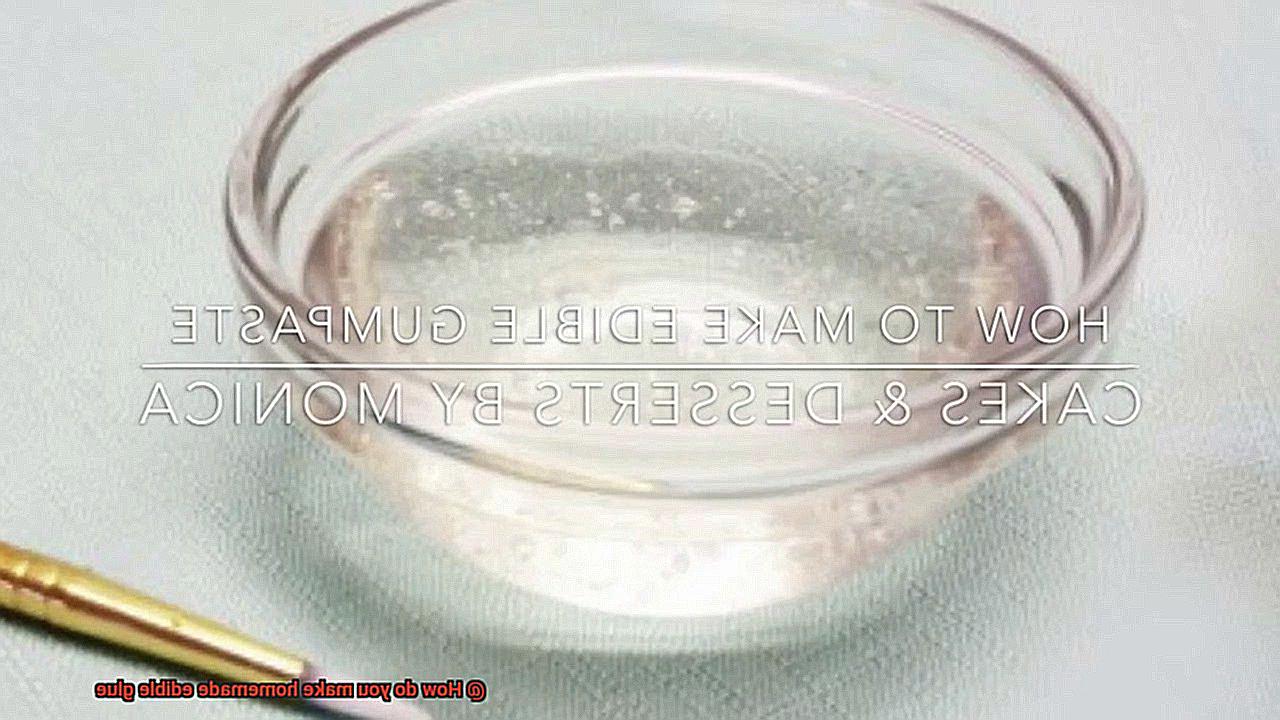
In this blog post, we’re diving headfirst into the captivating realm of homemade edible glue. Whether you’re a pro baker, a newbie decorator, or just someone who loves DIY experiments, this guide has got your back – and your taste buds.
So, buckle up as we embark on this adhesive adventure together and uncover the secrets behind homemade edible glue.
Recipe 1: Homemade Edible Glue with Powdered Sugar and Water
Contents
- 1 Recipe 1: Homemade Edible Glue with Powdered Sugar and Water
- 2 Recipe 2: Homemade Edible Glue with Corn Syrup
- 3 Recipe 3: Vegan Alternative with Agar-Agar Powder
- 4 Pre-made Edible Glues: Overview of store-bought options available in the market
- 5 Tips for Using Homemade Edible Glue:
- 6 Safety Precautions:
- 7 Creative Uses of Homemade Edible Glue:
- 8 Troubleshooting Common Issues:
- 9 Conclusion
Say goodbye to regular glue and hello to homemade edible glue. In this article, we will delve into the enchanting world of Recipe 1, a delightful concoction that combines powdered sugar and water. With its ease of preparation, versatility, and delectable taste, this edible glue is bound to become your go-to adhesive. Are you ready to embark on a creative journey that will satisfy both your artistic cravings and sweet tooth? Let’s dive in.
Crafting Homemade Edible Glue:
Creating this edible glue is as easy as waving a magic wand. Here’s a step-by-step guide:
- Sift the powdered sugar: Begin by sifting the powdered sugar, ensuring a velvety smooth texture that will make your final creation truly enchanting.
- Gradual water addition: In a mixing bowl, slowly add water to the powdered sugar while stirring continuously. This dance between the ingredients is crucial for achieving the perfect consistency.
- Achieve the perfect potion: Stir until the mixture transforms into a sticky, glue-like consistency that will hold your creations together with finesse. If the potion appears too thick, sprinkle it with a touch more water. If it’s too thin, sprinkle it with extra powdered sugar.
- Transfer and store: Once you’ve mastered the art of concocting this edible glue, pour it into a squeeze bottle or nestle it in a small jar with a snug lid. This way, you can easily apply it to your masterpieces and store any leftovers for future culinary adventures.
Applications in Baking and Cake Decorating:
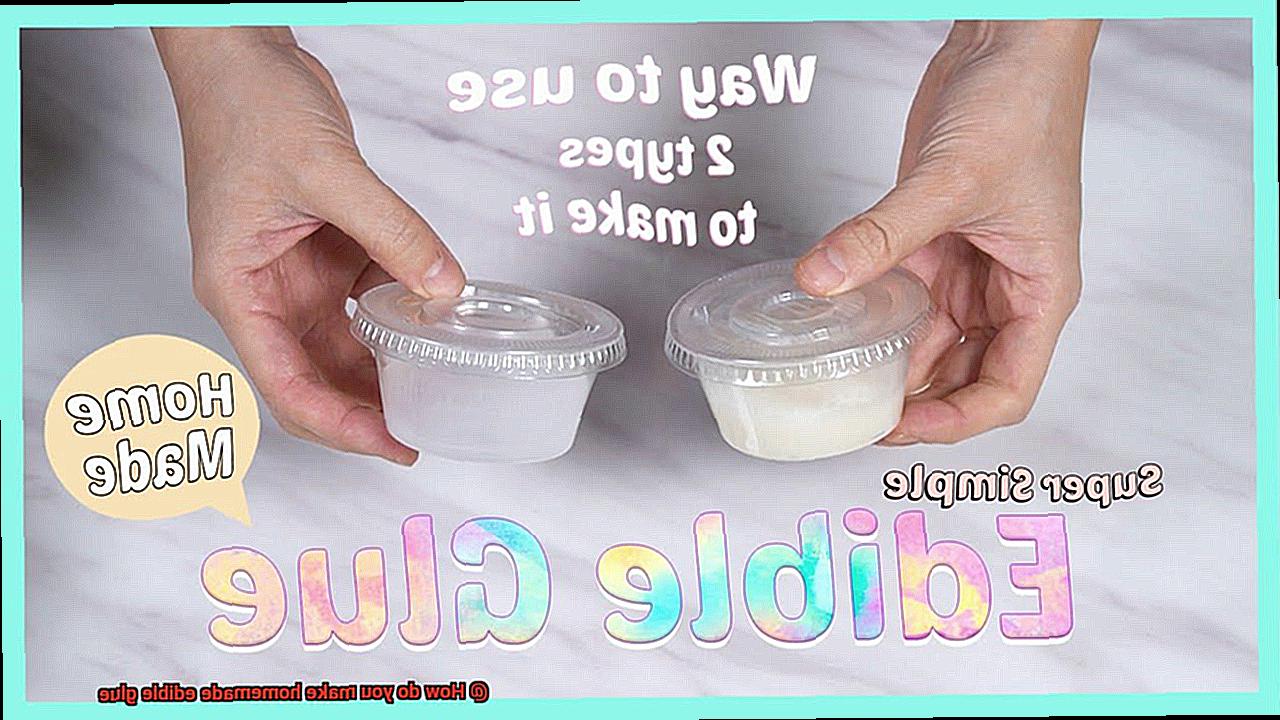
Now that you possess this marvelous homemade edible glue, let’s explore its myriad uses in the realm of baking and cake decorating:
- Fondant fantasies: Use this edible glue to attach intricate fondant decorations to your cakes, transforming them into stunning edible works of art that will leave everyone spellbound.
- Sprinkle magic: Unleash your inner fairy godmother by using this versatile glue to stick edible glitter or sprinkles onto cookies or cupcakes. Watch as these tiny sparkling gems add an extra touch of whimsy and delight.
- Gingerbread grandeur: Constructing gingerbread houses has never been easier. Harness the power of this edible glue as a strong adhesive, firmly holding the pieces together and allowing your architectural marvels to stand tall.
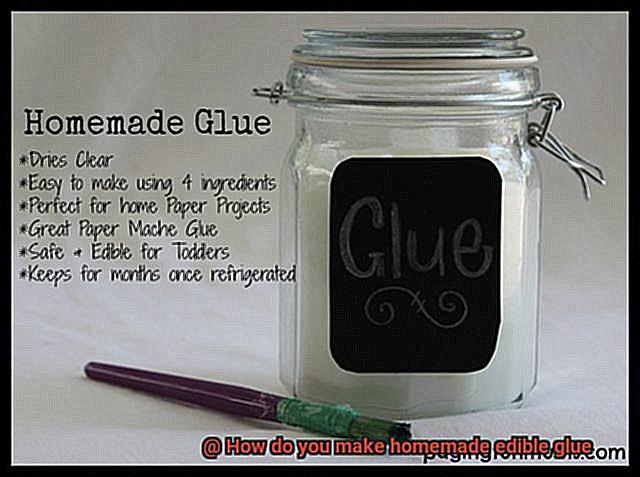
Important Considerations:
While this homemade edible glue is indeed safe to consume, it possesses a gentler strength compared to traditional adhesive glues. Therefore, it’s best suited for lighter decorations or attachments that won’t put too much strain on its magical powers.
Additionally, bear in mind that drying times may vary depending on the whims of humidity and temperature. To avoid any mishaps, grant your creations sufficient time to dry before handling or transporting them to their final destination.
Recipe 2: Homemade Edible Glue with Corn Syrup
If you’re a creative soul who loves crafting and baking, this recipe is an absolute treasure. With just a handful of simple ingredients, including the shining star – corn syrup, you can create a magical adhesive that not only works wonders but also delights your taste buds with its sweet flavor.
To conjure up this spellbinding glue, gather 1 cup of corn syrup, 1/4 teaspoon of white vinegar, and for those seeking an extra touch of magic, 1/4 teaspoon of almond or vanilla extract to add a delightful burst of flavor. Combine these ingredients in a small bowl and watch as they blend harmoniously into a sticky potion. The addition of vinegar ensures that your mixture achieves the perfect consistency without becoming overly tacky, ensuring your creations stay intact without any sticky mishaps.
Once your glue is ready, you’ll find yourself marveling at its thick consistency, similar to regular glue. However, if you prefer a slightly thicker or thinner texture, fear not. A dash more corn syrup will thicken it up, while a few drops of water will lend a lighter touch. The key lies in discovering the ideal consistency that suits your crafting desires.
Now comes the thrilling part – employing your homemade edible glue for all your crafting and baking escapades. This versatile concoction works like magic when attaching fondant decorations onto cakes, meticulously piecing together gingerbread houses, or securing edible adornments onto cookies. Remember to apply the glue sparingly and solely to the areas that require bonding. Excessive application may mar the elegance of your project and could potentially impact the delectable taste of your final creation.
Storage is a breeze for this forgiving homemade edible glue. Keep it in an airtight container at room temperature, and behold as it remains at your disposal for several weeks. Should the glue thicken or harden over time, simply wave your wand – or rather, pop it in the microwave for a few seconds – and watch it soften into its magical state once more.
Before you embark on your crafting or baking extravaganza, heed this word of caution. Though this homemade edible glue is safe to consume in small amounts, it is essential to remember that it is intended solely for decorative purposes, not as a food item. Resist the temptation to sip a spoonful and savor its sweetness instead through the masterpieces you create.
To ensure a seamless enchantment, always test the glue on a small, inconspicuous area before applying it to your actual project. This meticulous step guarantees that the glue performs flawlessly without leaving any unsightly residue or compromising the aesthetic of your creation.
Recipe 3: Vegan Alternative with Agar-Agar Powder
Calling all crafty bakers and artists. Say goodbye to store-bought glue with questionable ingredients, because I have a fantastic recipe for you. Get ready to unleash your creativity with homemade edible glue made with agar-agar powder, the ultimate vegan alternative.
Agar-agar is a magical gelling agent derived from seaweed. Not only is it perfect for those following a vegan lifestyle, but it’s also safe to eat in small quantities. So let’s dive into this enchanting recipe and discover the wonders of agar-agar glue.
To start, gather your ingredients: 1 cup of water, 1 tablespoon of agar-agar powder, and for an extra sticky touch, 1 teaspoon of vegetable glycerin.
Now it’s time to get cooking. In a small saucepan, bring the water to a boil over medium heat. Sprinkle the agar-agar powder evenly over the surface while stirring constantly to prevent clumps. Keep stirring until the mixture thickens and the powder dissolves completely.
If you want to take your glue game to the next level, add in the vegetable glycerin and stir until well combined. Trust me, this simple addition will make your craft projects even more successful.
Once the mixture has cooled down enough to handle, transfer it to a squeeze bottle or any container that allows for easy application. The consistency of agar-agar glue is similar to traditional gelatin-based glue, making it perfect for various crafting purposes.
When using your edible glue, simply apply a small amount onto the surfaces you want to stick together. Press the objects firmly for a few seconds to ensure a strong bond. As the glue cools down completely, it sets and creates a magical hold.
Now, here’s an important tip: while this glue is indeed edible, it’s not meant for large consumption. It’s perfectly safe to use for sticking edible decorations onto cakes or cookies, but avoid eating large amounts of the glue itself. Save it for bonding your artistic creations instead.
In conclusion, this simple and animal-friendly recipe for homemade edible glue using agar-agar powder is a game-changer for all craft enthusiasts. Whether you’re working on paper crafts, assembling gingerbread houses, or creating edible masterpieces, this vegan alternative will stick with you every step of the way.
Pre-made Edible Glues: Overview of store-bought options available in the market
Well, fret not. The market is teeming with pre-made options that will save you precious time and effort. Let’s dive into an enticing overview of the store-bought edible glues available, so you can unleash your creativity without any hassle.
To begin, let’s acquaint ourselves with the diverse array of brands and types of pre-made edible glues that grace the market. For delicately attaching fondant decorations to your cakes, renowned brands like Wilton and CK Products offer exceptional options. These glues are meticulously formulated to provide a robust hold while ensuring utmost safety for consumption.
Now, let’s delve into the tantalizing ingredients that compose these glues. You’ll be delighted to discover that they are crafted from food-grade gums, starches, or other edible substances. Rest assured, they comply with all the necessary food safety regulations, allowing you to relish your artistic creations without any qualms.
When it comes to forms, pre-made edible glues present a captivating variety. You can find them gracefully flowing as liquid, luxuriously glistening as gel, or resolutely clinging as paste. Liquid glues offer effortless application and even spreadability, while gels and pastes boast a sumptuously thick consistency for unparalleled adhesion. Esteemed brands such as Americolor and Sugarflair grace us with this delightful diversity.
But wait, the allure doesn’t end there. Some pre-made edible glues boast additional features that are bound to captivate your attention. Are you adhering to a specific dietary regimen? Fear not. Brands like Sweet Sticks offer vegan-friendly and gluten-free options that cater to your needs. And if longevity is a concern, worry not. Many glues boast an impressive shelf life, ensuring that you can store them for future projects without a hitch.
Now, let’s address the matter of pricing. The cost of pre-made edible glues can fluctuate depending on the brand and quantity. On average, anticipate investing around $5 to $10 for a small bottle or tube. Keep in mind that a little goes a long way, guaranteeing generous usage and exceptional value for your investment.
So, where can you embark on this tantalizing journey of pre-made edible glues? You’re in luck. These delectable treasures await you in specialty baking supply stores, both brick-and-mortar and online. Popular online marketplaces like Amazon and Etsy are also ripe with options to satisfy your cravings. Alternatively, if you prefer to connect directly with the brands themselves, many have their own websites where you can effortlessly place an order.
Tips for Using Homemade Edible Glue:
If you love baking and cake decorating, then homemade edible glue is about to become your new best friend. Edible glue is a safe and tasty alternative to regular glue when working with food items. It’s easy to make, cost-effective, and can be used to attach fondant accents, sugar flowers, or other edible decorations to your delicious creations. In this blog post, we’ll share some handy tips for using homemade edible glue effectively.
Tip #1: Consistency is Key
When making homemade edible glue, finding the right consistency is crucial. You want it to be thick enough to hold decorations in place but not so thick that it becomes difficult to apply. Start with a small amount of water when making your glue and gradually add more as needed until you achieve the desired thickness. Remember, it’s always easier to thin out the glue than to thicken it. So take your time and get the perfect consistency for your projects.
Tip #2: Brush It On
For precise application, use a small brush or a clean food-safe paintbrush when applying edible glue. This will help you control the amount of glue applied and minimize the risk of getting it on areas where it’s not needed. Plus, there’s something satisfying about painting a masterpiece with your edible glue brush. So let your creativity flow.
Tip #3: Double the Adhesive
To ensure that your decorations stay securely in place, apply a thin layer of glue to both the surface where the decoration will be placed and the back of the decoration itself. This double layer of adhesive will provide better adherence and peace of mind. It’s like giving your decorations an extra hug.
Tip #4: Let It Get Tacky
When working with delicate or intricate decorations, let the glue dry partially before attaching them. This creates a tackier surface that will hold the decorations more securely. Just be careful not to let the glue dry completely as it may become too stiff and lose its adhesive properties. It’s all about finding the sweet spot of tackiness.
Tip #5: Support Heavyweights
If you’re dealing with heavier or larger decorations, such as 3D elements or figurines, it may be necessary to provide additional support. Use toothpicks or small dowels as internal supports that are secured with edible glue. It’s like giving your creations a helping hand. These supports will ensure that your decorations stay upright and don’t topple over.
Tip #6: Handle with Care
Once your decorations are glued in place, resist the temptation to touch or move them until the glue has fully dried. This will prevent any accidental damage or displacement. Patience pays off. So take a step back, admire your work, and let the glue work its magic.
Safety Precautions:
Step up your baking and decorating game with the incredible power of homemade edible glue. This enchanting adhesive will become your loyal companion, aiding you in creating jaw-dropping edible masterpieces. However, before you plunge into the world of creativity, let’s explore some crucial safety precautions to ensure a delightful and secure crafting experience.
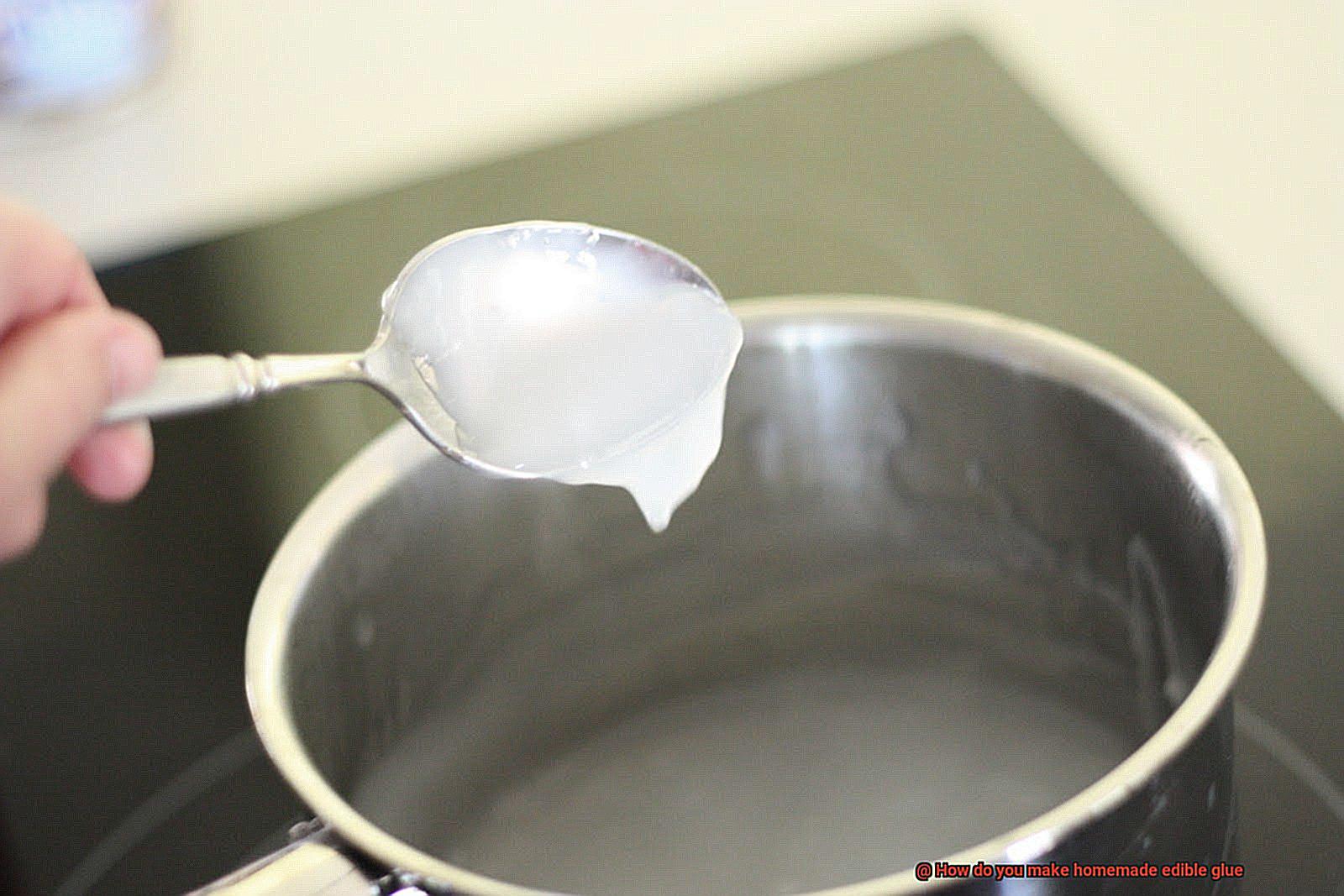
Select Ingredients with Care:
When it comes to homemade edible glue, the quality of ingredients is paramount. Opt for food-grade materials like gelatin or cornstarch, which are commonly used in edible glue recipes. By using safe and consumable ingredients, you can craft without any concerns regarding potential health risks.
Allergies Matter:
Before mixing up your glue, take a moment to consider any known allergies or sensitivities of those who will be using it. If someone has a specific food allergy, be sure to choose ingredients that do not contain those allergens. Safety should always be our top priority, ensuring that everyone can relish your creations without any worries.
Proper Storage for Freshness:
To preserve your homemade edible glue’s freshness and safety for future use, store it in airtight containers in a cool and dry place. This prevents any growth of microbes or contamination. Remember to clearly label your containers to avoid any accidental ingestion mishaps.
Hygiene Is Paramount:
Before immersing yourself in the creative process, thoroughly wash your hands with soap and warm water. This simple step eliminates any potential bacteria or germs that could contaminate your glue. Additionally, clean all utensils and equipment used during preparation to maintain optimal hygiene standards.
Supervise Little Crafters:
If little ones are joining in on the fun, proper supervision is a must. Teach them about the importance of not consuming large amounts of the glue and remind them that it is solely meant for crafting purposes. By educating them about potential risks and the significance of adhering to safety guidelines, you can ensure a worry-free crafting experience.
Label Allergens:
If you plan to use your homemade edible glue on food items, consider labeling them appropriately if they contain any allergenic ingredients. This thoughtful step will help individuals with allergies or dietary restrictions identify potential risks and make informed choices.
Creative Uses of Homemade Edible Glue:
Today, we will delve into its extraordinary versatility beyond its culinary applications. Prepare to be captivated by the limitless creative possibilities this magical glue holds.
Let’s start with the art of cake decorating. Homemade edible glue shines as a superstar when it comes to attaching delicate fondant decorations onto cakes. Whether you’re adding dainty flowers or adorable fondant figures, this glue ensures a secure hold without leaving any unsightly residue. It also excels at bonding multiple cake layers together, resulting in a stable and awe-inspiring cake structure.
But that’s not all. Baking enthusiasts will rejoice in using edible glue to seal pastry edges or fashion intricate designs on pies and tarts. Say farewell to water or egg wash that may compromise the flavor or texture of your pastry. With homemade edible glue, you can achieve precise and professional-looking finishes on your baked goods, elevating their presentation to new heights.
Now, let’s turn our attention to everyone’s favorite holiday tradition – gingerbread house construction. Edible glue is an indispensable tool here, providing a robust adhesive to hold those gingerbread pieces together. No more collapsing houses. Moreover, you can employ edible glue to affix decorative candies and embellishments, infusing your gingerbread creation with an extra touch of artistic flair.
Attention chocolate lovers. Homemade edible glue is a true game-changer for those working with chocolate. Whether you’re crafting molded chocolates, intricate chocolate sculptures, or even mending broken pieces, this glue has got your back. Seamlessly attach chocolate decorations onto cakes or desserts without compromising taste or appearance. The adhesive properties of homemade edible glue make it an indispensable ally for anyone working with this delectable treat.
But wait, there’s even more. Edible glue extends its versatility beyond culinary uses alone. It transforms into a handy tool for various craft projects. Unleash your creativity by crafting edible art pieces or assembling edible centerpieces for special occasions. Scrapbooking enthusiasts can utilize edible glue to affix food-related items, such as candy wrappers or cookie cutouts, onto pages, adding a delightful and edible touch to their creations. The possibilities are truly endless.
Whether you’re a professional baker, a cake decorator, or simply someone who revels in the joy of crafting, homemade edible glue is an essential addition to your arsenal. It unlocks a world of possibilities for creative expression and culinary innovation. So go forth, unleash your imagination, and let the magic of homemade edible glue propel your projects to new heights.
Troubleshooting Common Issues:
But beware. Like any DIY project, challenges may arise that threaten to dampen your experience. Fear not. In this article, we delve into the most common problems encountered with homemade edible glue and arm you with troubleshooting tips to overcome them.
Consistency:
Achieving the perfect consistency is a hurdle faced by many in the world of homemade edible glue. Whether too thick or too thin, it can impede your creative flow. Fear not, intrepid creator. Troubleshoot this issue by gradually adding water to thin out the glue or powdered sugar to thicken it. Through experimentation and adjustment, you will discover the ideal consistency that spreads effortlessly and works like a dream.
Shelf Life:
Beware the ticking clock. Unlike its store-bought counterpart, homemade edible glue may have a shorter shelf life due to its food-based composition. Preserve its vitality by storing it in an airtight container within a cool and dry abode.
Vigilance is key. Keep watch for any changes in color or texture that may indicate spoilage and bid farewell to any glue that has gone bad.
Achieving a Strong Bond:
Yearning for an unbreakable connection? If your homemade edible glue struggles to forge a strong bond, fret not. Delve into the realm of troubleshooting with confidence.
Begin by ensuring both surfaces are pristine and dry before applying the adhesive elixir. This primes the canvas for superior adhesion. Additionally, apply a thin layer of glue for optimal results and grant it ample drying time to fortify the bond.
Safety Concerns:
Venturing into the realm of culinary wizardry carries certain risks. While homemade edible glue is generally safe for consumption, it is vital to understand potential allergens and sensitivities lurking within its ingredients. Fortify your knowledge. Inform yourself and others of any known allergens present in your homemade glue. Proceed with caution when using it on items that will directly touch food, such as cake decorations, to safeguard against any health risks.
Conclusion
Creating your own homemade edible glue is not only a fun and creative project, but it also ensures that you have full control over the ingredients used. With just a few simple steps, you can make a safe and non-toxic glue that is perfect for all your edible crafts and decorations.
To make this deliciously sticky concoction, start by gathering the necessary ingredients: powdered sugar, water, and gum arabic or tylose powder. These ingredients are readily available at most grocery stores or specialty baking shops.
In a clean bowl, mix together one cup of powdered sugar with two tablespoons of water. Stir until the mixture becomes smooth and free of lumps. This forms the base of your edible glue.
Next, add half a teaspoon of gum arabic or tylose powder to the mixture. These natural binding agents help thicken the glue and improve its adhesive properties. Mix well until fully incorporated.
Once your homemade edible glue is ready, transfer it into a small squeeze bottle or pastry bag for easy application. The consistency should be thick enough to hold its shape but still flow smoothly.
Now comes the exciting part – using your homemade edible glue to bring your culinary creations to life. Whether you’re assembling gingerbread houses, decorating cakes or cookies, or crafting intricate sugar sculptures, this versatile glue will hold everything together without any worries about consuming harmful chemicals.
Remember to store any leftover glue in an airtight container in the refrigerator for future use. It should stay fresh for several weeks if properly stored.
So there you have it – a simple yet effective recipe for making homemade edible glue. Get creative with your designs and enjoy the peace of mind knowing that every ingredient used is safe to eat.

